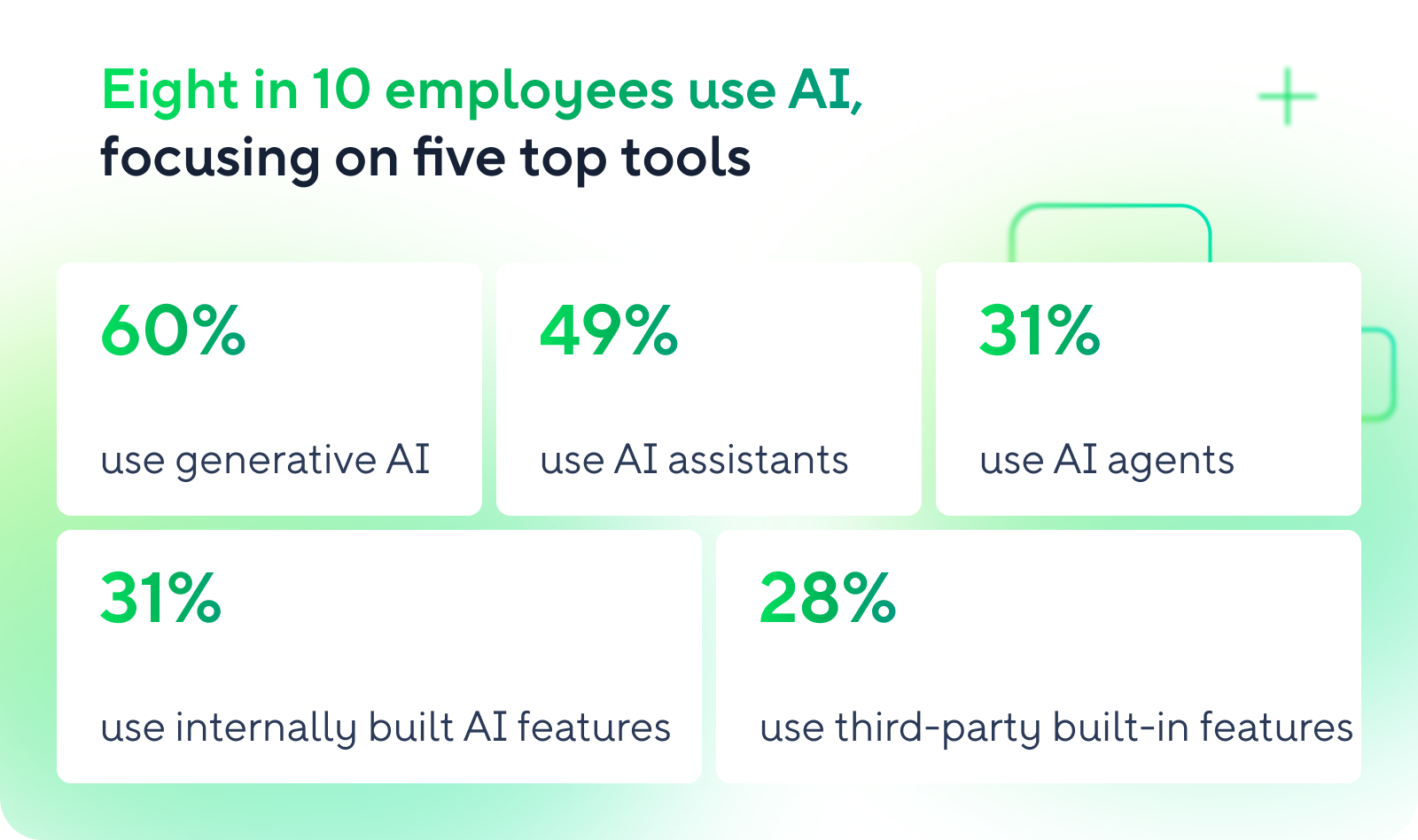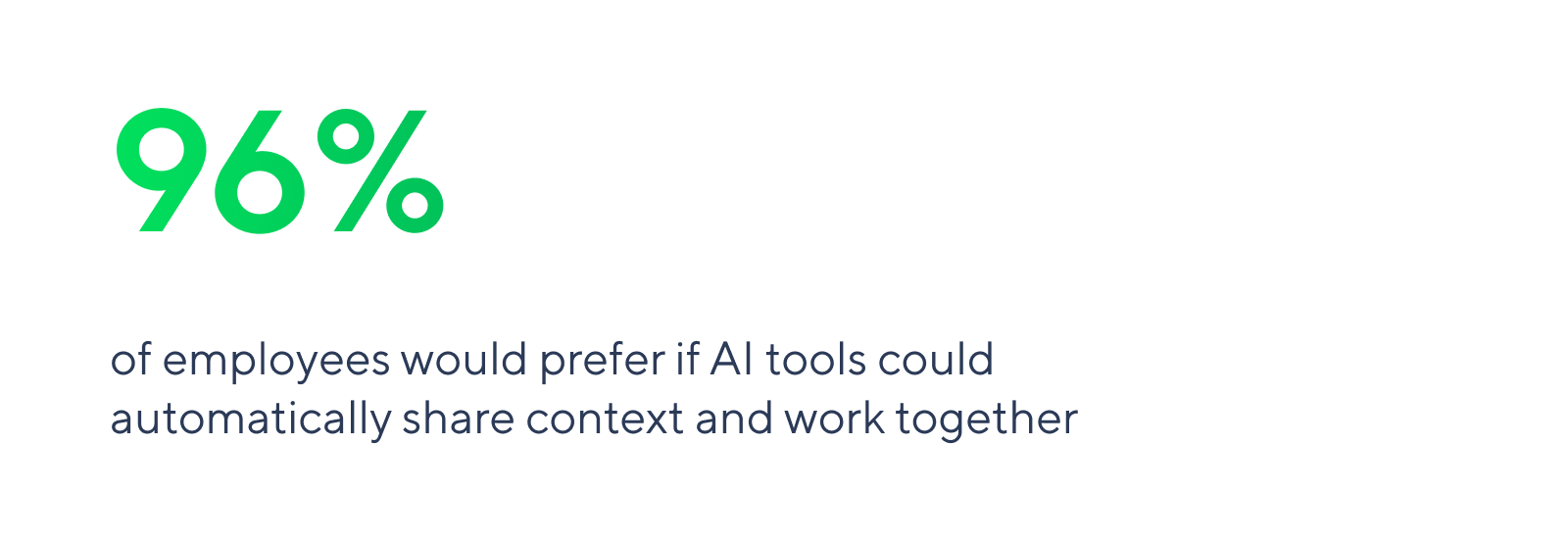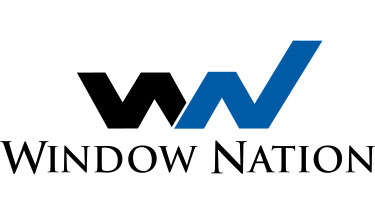Key takeaways:
- What did the global study reveal about AI adoption in workplaces? Over 80% of employees use AI, but many are using multiple tools — including approved and unapproved options — with little guidance or training.
- What are the main challenges of this scattered approach to AI adoption? A lack of true integration is leading to siloed data, disconnected systems, and inefficient workflows.
- What is shadow AI and its implications? Shadow AI refers to unapproved tools used by employees due to inadequate support. This can put the security of sensitive data at risk.
- What features do employees want in AI tools? Accuracy, speed, ease of use, and better integration with core systems are critical for effective AI use in daily tasks.
- What is the solution for maximizing AI’s potential? Connected intelligence through unified systems, structured data, and integrated workflows can transform productivity and foster meaningful AI adoption.
We recently wrapped Collaborate 2025, our eighth annual work management event. It was a major success, with thousands of guests logging in to see Wrike experts and special-guest speakers discuss how AI is completely rewiring the way we work.
It was clear from every conversation that the pace of acceleration in workplace technology is unprecedented and profound, with AI pushing the boundaries of what’s possible. To get a read on how this is affecting enterprises and their employees in their everyday work, we commissioned a global study, “The Age of Connected Intelligence.”
To this end, we surveyed 1,000 employees in 10 industries across five countries. The results revealed a critical issue: We’re flooded with AI-powered tools that promise the world … but actually deliver siloed data, disconnected systems, and inefficient workflows.
Why? Because we’ve been so busy onboarding new technology, we neglected to unify our people, systems, and tools behind the scenes. And until we connect all of that intelligence, we’re never going to unlock AI’s full potential.
Let’s take a closer look at what our research uncovered — and what it means for leaders who want to realize the value of their investment in AI.
AI adoption is surging … but scattered
The momentum behind AI is undeniable. Every day, employees download new apps, platforms, tools, and services that use artificial intelligence to accelerate and ameliorate our work. At the executive level, it has become a fundamental part of our overarching strategy for success.

In fact, in our global survey of 1,000 full-time knowledge workers, we found that more than eight in 10 are using AI at work, whether it’s GenAI, copilots, agents, or custom features.
Of those, 53% use one or two AI tools weekly, 38% use three to five, and 9% use more than five.

As you can imagine, this tool overload is leading to real integration headaches, learning fatigue, and context-switching challenges. This is confirmed by our respondents; only 34% strongly agree that their teams use AI in a consistent and aligned manner.
So what’s driving this fragmentation? It appears to be a combination of factors, including:
- Siloed adoption: Teams are experimenting independently, with 37% reporting no central strategy.
- Lack of leadership guidance: 39% of respondents cite insufficient prioritization from the top.
- Inconsistent enablement: Only a little over a third have received company-wide training.
These findings show that while we’re racing to adopt the latest and greatest AI tools, we’re failing to support the technology with true integration, shared context, and employee enablement.
The result of this is a failure to fully realize the revolutionary power of AI. We are, in fact, very busy standing still.
Shadow AI is on the rise
One of the most interesting trends highlighted in our research is the rise of shadow AI, a byproduct of the scattergun approach to AI.
Our research revealed that one in five workers still doesn’t use any formally introduced AI tool. In an age of AI-supercharged productivity, this leaves them playing chess without all their pieces.
Even if AI has been officially deployed, it’s often poorly enabled and aligned. For example:
- Only 27% of organizations describe their AI efforts as “running smoothly”
- Less than half have company-wide training, policies, or enablement
- 29% say tools are rolled out without enough onboarding
Some workers are taking matters into their own hands, with 42% using unapproved tools in the course of their work. They’re reaching for consumer-grade tools or personal ChatGPT, Claude, or Midjourney accounts, usually to solve a specific problem fast. This signals a lack of structure, not a lack of enthusiasm. Employees want to use AI confidently and responsibly — but they need leadership to provide the right framework for doing so.
Until then, many more will resort to independent, disconnected, and frequently unregulated shadow AI. This comes with real risk, as Microsoft recently pointed out, “because sensitive company or customer data may not be protected effectively, leaving organizations vulnerable to data leaks, regulatory non-compliance, and increased risk of cyber-attack.”
Workers are craving better-connected tools
It’s clear from our survey that knowledge workers are aware of the gaps — and missed opportunities — of fragmented AI adoption and poorly integrated solutions.
When we asked them what matters most in their AI tools, the answers were telling:
| Accuracy | 52% |
| Speed | 47% |
| Ease of use | 46% |
| Privacy and security | 42% |
| Relevance to role | 28% |
| Context awareness | 26% |
The fact that accuracy and speed are valued comes as no surprise. But context awareness and relevance are quickly rising in importance, as employees recognize that AI needs to understand their unique workflows, goals, and tasks in order to provide a genuinely helpful experience.
That’s why 33% of our respondents said they need stronger AI integration with core systems.
What these workers are calling out for is connection — between AI tools, work management systems, and organizational data.

As this statistic demonstrates, employees overwhelmingly believe that connected AI tools would be valuable (96%), with over half stating that they would transform the way they work.

Wrike’s AI features have become indispensable in my daily workflow, enabling me to accomplish more in less time and with greater accuracy.
De Lisa Patterson, Creative Director
The solution is connected intelligence
It’s clear that for too long, leaders have been stuck in a pilot phase when it comes to AI. Here at Wrike, we think the time for experimentation is over — to close the gap between vision and reality, and unlock AI’s true potential, organizations need to unify their people, systems, and data.
So what does this look like in real life?
- Structured data: Siloed data is wasted data. Wrike customers can use our MCP Server to connect their AI agents to the wealth of valuable proprietary data at their fingertips. This turbocharges agentic AI, empowering it with rich context for far more intelligent interactions and insights.
- Integrated workflows: Combining smart tools with powerful workflow management software, such as Wrike, brings clarity and speed to even the most complex processes. This is why more than a third of our survey respondents prefer organization-wide AI solutions rather than team-specific tools.
- AI-powered collaboration: Empowering teams with robust gen AI tools, custom AI agents, and a lightning-fast copilot removes the need for shadow AI. By using our award-winning AI features, employees can connect and accelerate all their systems — while staying within one secure and fully connected platform.
All of this adds up to connected intelligence, which means fewer silos, tighter workflows, and removing the friction that stands in the way of great work. It’s the foundation for serious AI adoption and the key to moving from isolated, expensive trials to meaningful, scalable impact.

At Wrike, we help organizations build the infrastructure that modern work actually needs. This is what enabled publisher Varsity Yearbook to cut proofing turnaround times by 42%, digital marketing agency Jellyfish to save 3-5 hours a week on individual workloads, and legal services firm Kalexius to halve the time they spent in status meetings. If you want to see how we can also transform your teams, reach out to our sales team to start a conversation.
Wrike’s AI and automation features have been game changers for optimizing workflows and boosting efficiency.
Bon Kenneth Mole, Senior Specialist, Web Designer, Vertiv
In the meantime, let’s expand on this topic over on LinkedIn: I’d like to hear from other SaaS leaders on how you’re working to transition from experimentation to excellence in this age of connected intelligence.
Methodology for ’The Age of Connected Intelligence’ research
In September 2025, Wrike surveyed 1,000 full-time knowledge workers, defined as employees working either fully in the office, fully at home, in a co-working space, or in a hybrid work setting. Respondents fell into one of two work type categories: 1) “Service organization/company” or 2) “Non-services companies.”
At the time of the survey, all respondents were 18 years or older and employed at an organization with at least 1,000 employees globally. Responses were collected from the U.S., U.K., Germany, France, and Japan.








